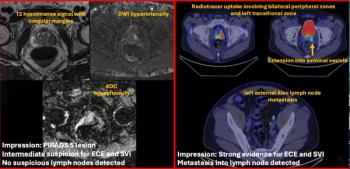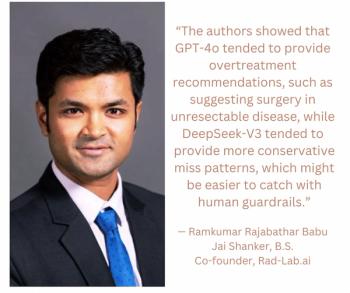Ruling Out Logic in the Radiology Reading Room
Have you seen a fair share of laundry list R/Os from referring docs?
There are numerous minor rites of passage for upcoming young physicians. Many are unintended but one goes through and is shaped by them all the same.
One of them involves repeatedly attending orientation sessions for every facility and department one encounters. It doesn’t matter if they all essentially repeat the same things, or if they know you have been through the same stuff a dozen times before. Every facility needs to be able to put a check in the box that it told you how to behave and how not to.
This doesn’t happen so much later on in one’s career. Unlike a med student, who might attend clinical rotations in half a dozen different places before going on to internship here, residency there, etc, a doc who has completed training is liable to stay put in one place for years and perhaps the rest of his or her career, if one is lucky to find a spot that is good for the long haul.
One tidbit facilities try pounding into everyone’s head is dos and don’ts for ordering medical imaging. In particular, “rule out” is not a valid reason for study. Unfortunately, instead of making sure everyone understands why this is the case, they do things like providing workarounds that will satisfy the third-party payors: Don’t say “R/O appendicitis.” Do say “Evaluate for appendicitis.” Of course, this word juggling doesn’t do a thing to improve the diagnostic process.
As cognitive science has demonstrated, the brain doesn’t process negatives so well. Telling somebody not to do something, let alone to remember the prohibition down the line, is relatively weak. Quick, what pops into your head if I say “Don’t think of an elephant?”
Accordingly, across the field of diagnostic imaging, “R/O” has utterly failed to be stamped out. We consider ourselves lucky when it is accompanied by something from which we can extract clues as to what is occurring. “R/O appy,” we can hope, means that there is pain in the right lower quadrant, maybe a fever and elevated white blood cell count. It’s a measure better than guff like “R/O pathology” or my personal favorite: “R/O pain.”
Not that we have had much choice in the matter, but if we accept such a low bar for clinical information, we shouldn’t be surprised when some referrers decide even that bar is too high for them to bother clearing. “R/O appy,” for instance, turns out to be in a patient whose appendix was already removed. Sometimes we try to educate (or taunt) referrers who told us to R/O inappropriate things. No, I can’t “R/O incarceration” of a hernia for you. Go do a physical exam.
One trend of recent years has been the laundry list R/O. I suppose some clinicians think that, if they throw a bunch of things after “R/O,” that gives the impression that they are thinking. Unlike the simple “R/O appy,” however, more often becomes less. If items on your list are now both sides of the abdomen, upper and lower quadrants, I no longer have any idea where your patient’s issues are and I get the impression that you don’t either.
Such demonstrations of clinical indifference (or incompetence) can be so powerful as to nullify otherwise good behavior. Take, for instance, this gem from my past week: “RLQ abd/right flank pain r/o appendicitis, diverticulitis, intestinal obstruction, enteritis, perforated ulcer, leaking aneurysm, abdominal wall hematoma, mittelschmerz, ureteral calculi, renal pain, seminal vesiculitis, psoas abscess.”
Now, not only do I have the impression that my referrer might just have asked ChatGPT to give him a differential for acute pain, but this referral suggests that he or she doesn’t know the sex of the patient or what anatomic structures are likely to be present within (hint: mittelschmerz will not happen in the same half of the population that might have seminal vesicles to be inflamed).
I will take the moment here to acknowledge that, yes, there have been vanishingly rare instances of patients who have both ovaries and seminal vesicles. That said, unless a referrer bothers to write that his or her patient is, in fact, one of these individuals, I’m going to play the odds that he or she isn’t sending me a diagnostic zebra. Careless ordering is vastly more common.
If your grade school days included lessons in logic, you might recall exercises beginning with things as a “given.” For instance, there are students A through D to sit in seats 1 through 4. A cannot sit next to B, C must sit next to D, etc. The exercise becomes figuring out what deductions can be drawn from the given facts.
Diagnostic imaging takes a few pages from that book. Rads are supposed to draw conclusions from the givens of clinical information and the scans that have been performed. The logic of our conclusion only holds together if we can, in fact, rely on what we have been given. If our given clinical info is wrong, we become an exercise of “garbage in, garbage out.”
If things are taken a step further and we are given self-contradictory information (such as being told a patient has two sets of mutually exclusive organs), you might forgive us for mentally throwing our hands up in the air. What are we even doing here?
I shared the laundry list history I mentioned above on a social media thread, and one of the rads responded with something I have seen before. If we’re going to be on the hook for figuring out what’s the “real” clinical history and what isn’t, maybe it’s time we started getting a piece of the E&M (evaluation and management) reimbursement pie.
Newsletter
Stay at the forefront of radiology with the Diagnostic Imaging newsletter, delivering the latest news, clinical insights, and imaging advancements for today’s radiologists.





























